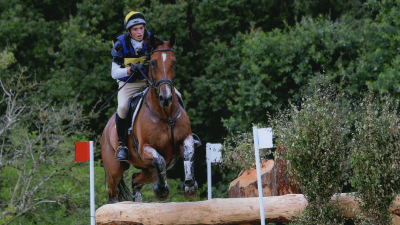
It can be frustrating and worrying when your talented competition horse begins to perform poorly.
I know the problem first-hand, both as an equine vet but also as a competitor myself, having done quite a lot of eventing (pictured).
The good news is that there is an array of treatments available including some new developments which are very successful. At Newbiggin we also have facilities for standing surgery and gastroscopy – including a three-metre equine video endoscope - putting us in a strong position to make diagnoses and get good outcomes.
Don’t forget that loss of performance can occur in any horse, no matter what level of competition they are taking part in, whether they are a pony club pony or a top-level competition horse.
Often poor performance can be quite subtle and may be a gradual process, as opposed to a sudden refusal to meet the competition requirements.

A broad spectrum of problems can lead to poor performance. The most common cases are low grade lameness, back pain and musculoskeletal sources of pain.
Whilst forelimb lameness is often noticeable when the horse is ridden, mild hind limb lameness may not be so easy to detect. Look out for the horse being less willing to jump, losing power, or it may be struggling to perform certain movements like shoulder-in, or leg yielding or collected paces.
Back pain often manifests as the horse becoming resistant to being tacked up or not being willing for the rider to get on. And you may notice the horse being very stiff or seeming to have a fixed frame.
Initially you may think the horse is resisting because it is misbehaving, but it pays to always take a closer look for a physical cause.
Besides orthopaedic pain, poor performance can also be caused by what we term medical problems – such as anaemia, respiratory disease or gastric diseases.
In fact, gastric ulcers are one of the leading causes of poor performance that we see. Management plays a part, horses that are fed a high carbohydrate diet, and horses galloping or doing a lot of canter work are particularly prone to gastric ulceration.
Recently some new and very successful treatments have become available for gastric ulcers. In the past glandular ulcers were very difficult to treat and could end a horse’s competition career, but now the prognosis is good. And we are able to diagnose gastric ulcers at Newbiggin, where we have a specialist equine endoscope.
One recent case we saw is an eight-year-old thoroughbred gelding which is a successful eventing horse competing at two-star.
He had a change of ownership and soon afterwards started to buck and resist when doing canter work and jumping. After examining him and performing radiographs of his spine, we diagnosed impingement of the dorsal spinal processes also known as kissing spines.
We carried out a surgery called interspinous ligament desmotomy. This was done under standing sedation at our facility at Newbiggin. It is a minimally invasive surgery which involves making a small incision on one side of the back and cutting the ligament.
It has the great advantage of a short recovery time. The owner was able to start riding again after six weeks, and post-surgery the horse was doing very well and is back jumping and preparing to start competing again.